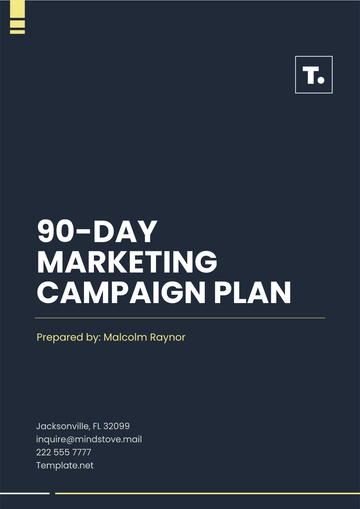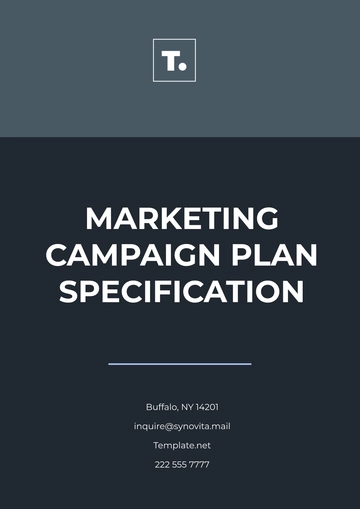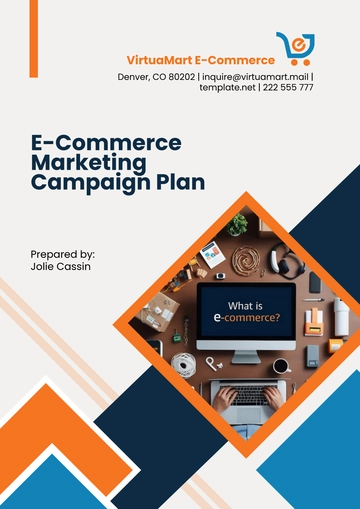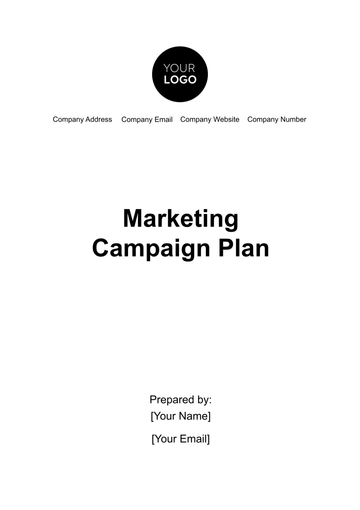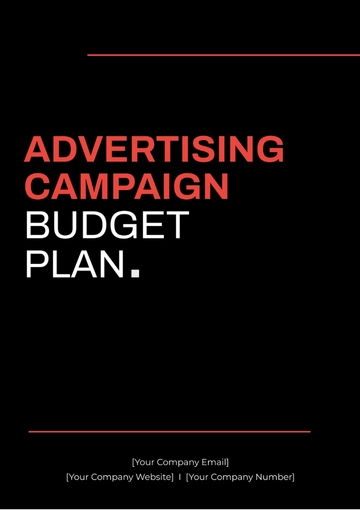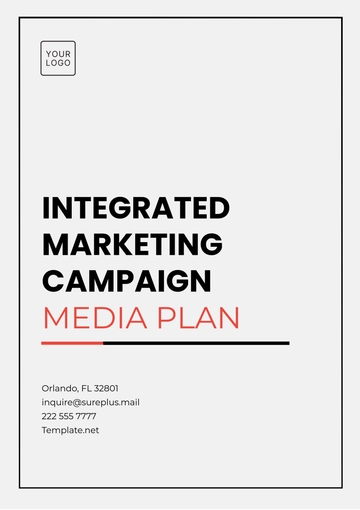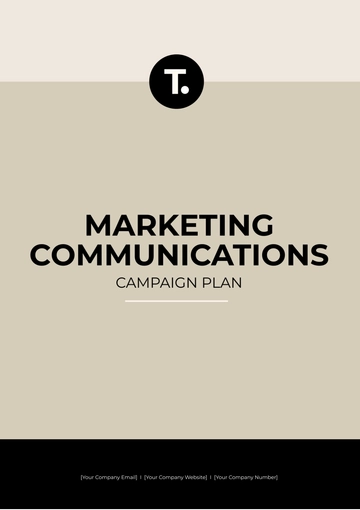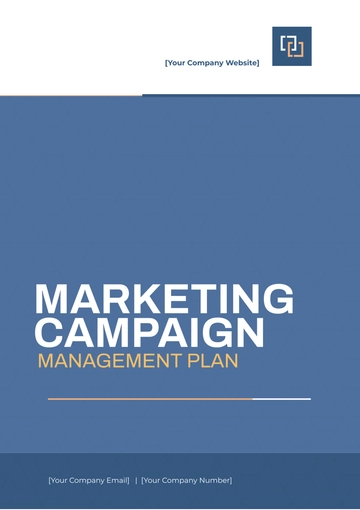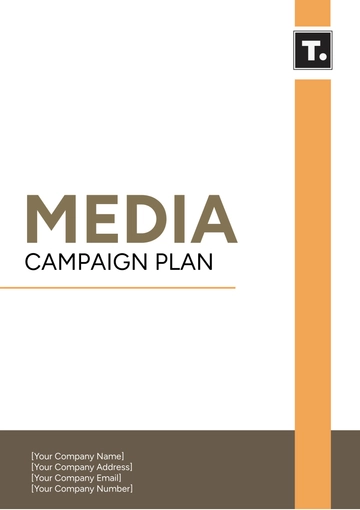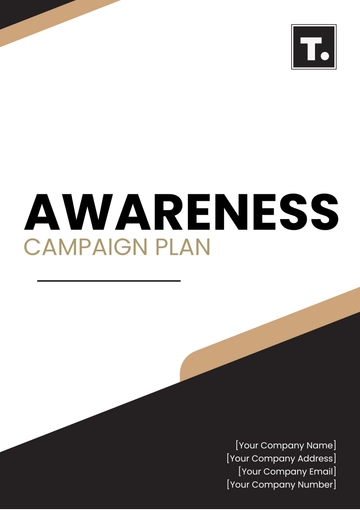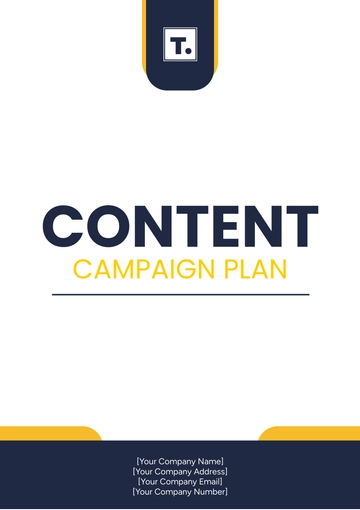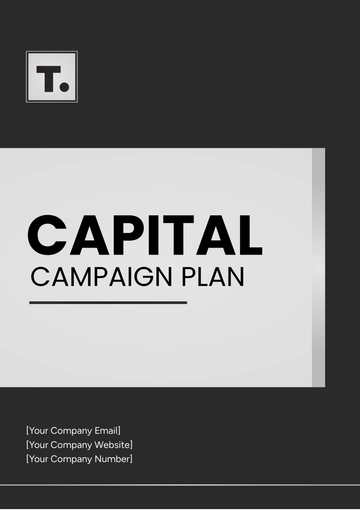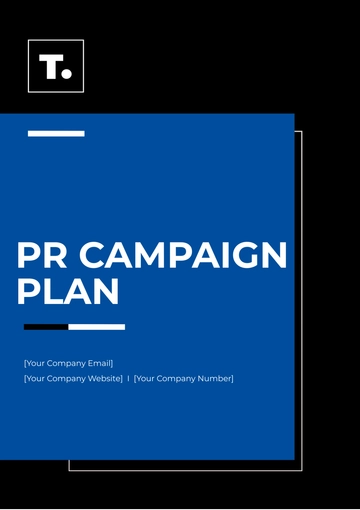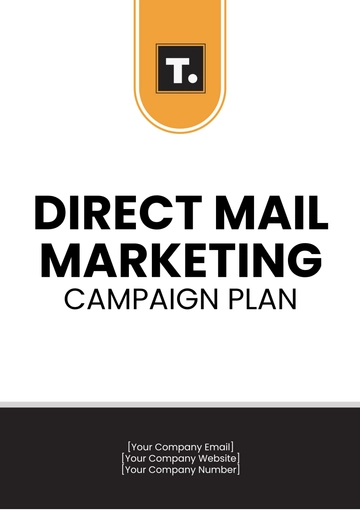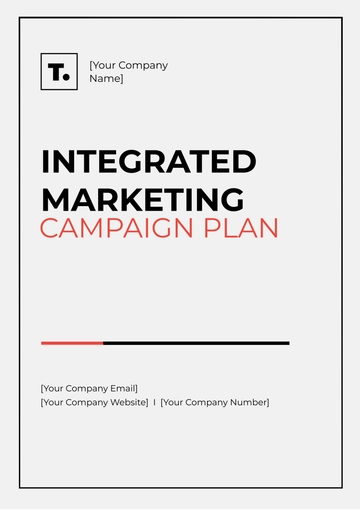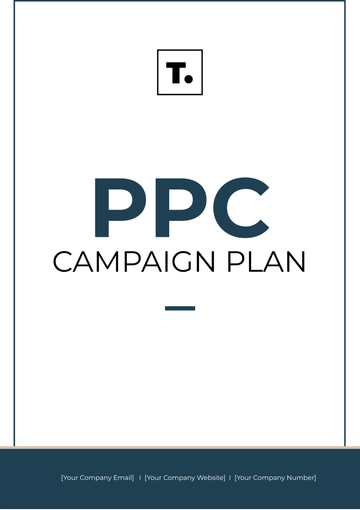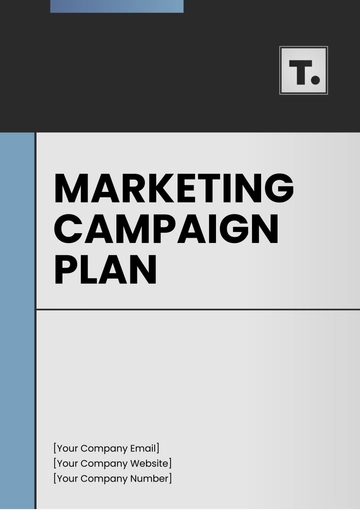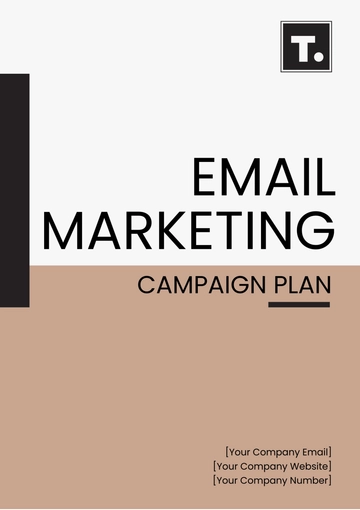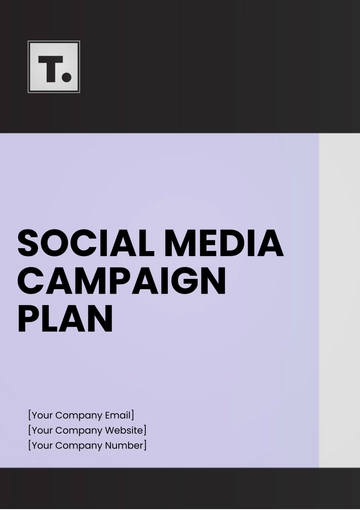Free Advertising Full Campaign Rollout Plan
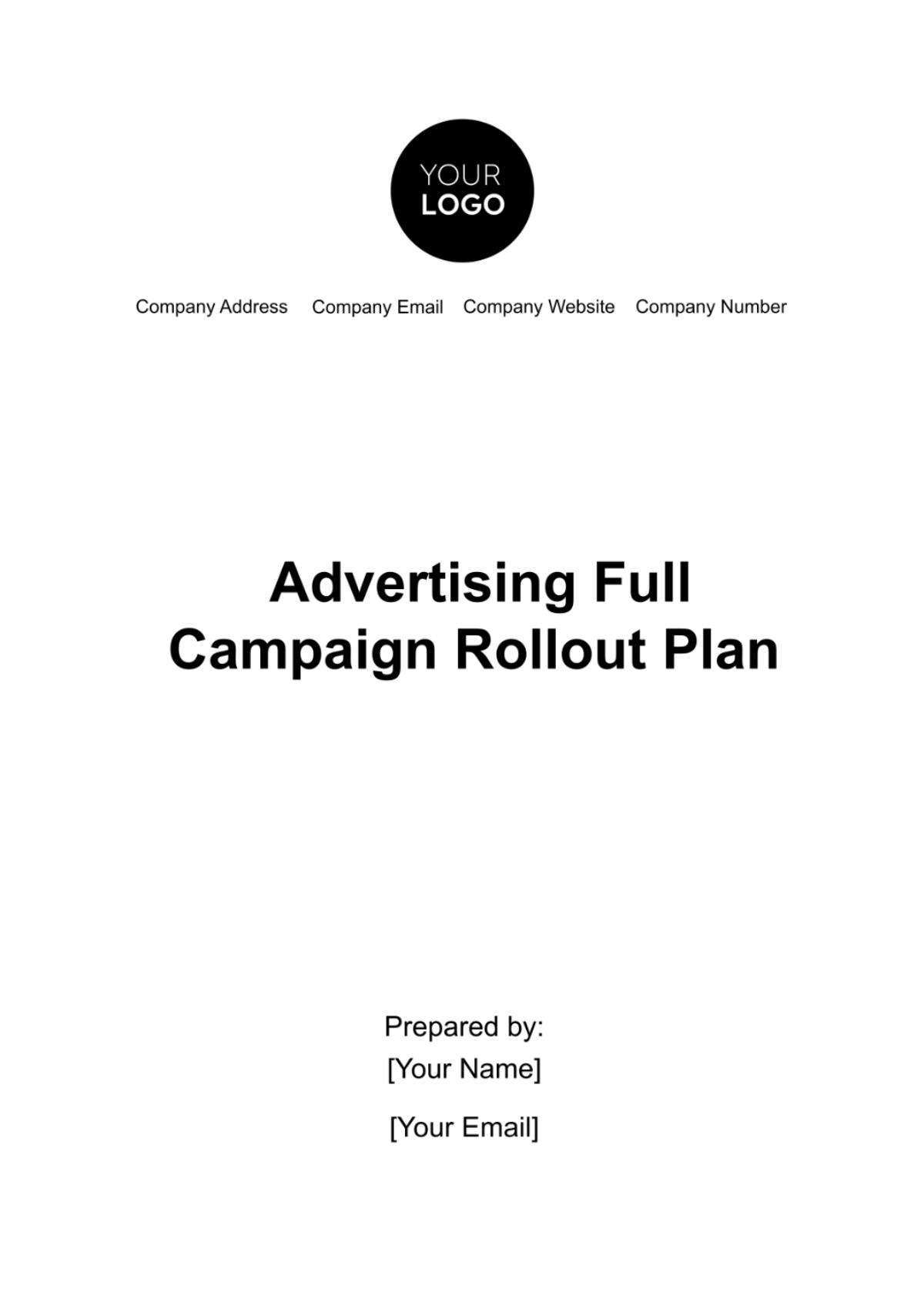
I. Introduction
A. Overview
[Your Company Name], a leading provider of cutting-edge [industry] solutions, is excited to unveil an innovative advertising campaign aimed at captivating audiences and solidifying our brand presence in the market. This comprehensive rollout plan outlines our strategic approach, key objectives, timeline, and resources required for the successful execution of the campaign.
With a deep understanding of consumer preferences and market trends, [Your Company Name] is poised to deliver a compelling narrative that resonates with our target audience. By leveraging a mix of digital channels, traditional media, and strategic partnerships, we aim to create memorable experiences and drive measurable results.
II. Objectives
A. Primary Objectives
Increase brand awareness by 25% within the first quarter of the campaign launch.
Generate 10,000 qualified leads within six months of the campaign rollout.
Enhance customer engagement by 30% through interactive content and social media interactions.
B. Secondary Objectives
Strengthen brand loyalty among existing customers by 20%.
Establish [Your Company Name] as a thought leader in the [industry] industry.
Drive traffic to [Your Company Website] by 50% within the first three months of the campaign.
This table summarizes the primary and secondary objectives of the advertising campaign:
Objective | Target Achievement |
|---|---|
Brand Awareness | [00%] increase |
Lead Generation | [00,000] leads |
Customer Engagement | [00%] improvement |
Brand Loyalty | [00%] enhancement |
Thought Leadership | Establishment |
Website Traffic | [00%] increase |
III. Target Audience
A. Demographics
Age: The target demographic primarily falls within the age range of 25-45, encompassing young professionals and established individuals seeking innovative solutions.
Gender: The campaign targets both male and female audiences, acknowledging the diverse interests and purchasing behaviors within the demographic.
Location: Our focus extends to urban and suburban areas, where accessibility to technology and adoption of innovative products/services are prevalent.
Income Level: The target audience comprises individuals with middle to upper-income levels, capable of investing in premium products/services that offer value and quality.
B. Psychographics
Interests: Our audience is passionate about technology, constantly seeking innovation to enhance their lifestyles and streamline daily activities. They are early adopters of new trends and are intrigued by solutions that offer convenience and efficiency.
Values: Quality is paramount for our audience, as they prioritize products/services that deliver superior performance and reliability. Sustainability is also a key value, with an emphasis on eco-conscious practices and products that minimize environmental impact. Additionally, convenience plays a significant role, as our audience seeks solutions that simplify their lives without compromising on quality.
IV. Strategy
A. Channels
Social Media Platforms: Leveraging the power of Facebook, Instagram, Twitter, and LinkedIn, we aim to engage our audience through compelling visual content, interactive posts, and targeted advertisements. Each platform will be utilized strategically to reach specific segments of our audience and foster meaningful interactions.
Online Advertisements: Through Google Ads, Display Ads, and Retargeting campaigns, we will maintain a strong online presence, targeting potential customers based on their search behavior, interests, and demographics. Dynamic ad creatives and personalized messaging will be employed to capture attention and drive conversions.
Influencer Marketing: Collaborating with industry influencers who resonate with our target audience, we will leverage their credibility and reach to amplify our message and enhance brand visibility. By partnering with influencers on platforms such as YouTube, Instagram, and TikTok, we aim to authentically connect with our audience and inspire action.
Email Marketing: Our email marketing strategy will focus on nurturing relationships with existing and potential customers through targeted campaigns tailored to their preferences and behavior. Personalized content, exclusive offers, and engaging visuals will be utilized to drive engagement and encourage conversions.
Traditional Media: While digital channels dominate our strategy, we recognize the enduring influence of traditional media, particularly television. Television commercials aired during prime time slots on major networks will complement our online efforts, reaching a broader audience and reinforcing our brand message through visual storytelling.
V. Timeline
A. Pre-Launch Phase
Research and Planning:
Conduct market research to identify key trends, competitor strategies, and audience preferences.
Define campaign objectives, target audience segments, and messaging strategies.
Develop a detailed project plan outlining tasks, responsibilities, and timelines.
Creative Development:
Collaborate with creative teams to conceptualize and design compelling visuals, copy, and multimedia assets.
Iterate on creative concepts based on feedback and market insights.
Finalize creative assets for use across various channels and platforms.
Channel Setup and Preparation:
Set up social media accounts, advertising accounts, and email marketing platforms.
Configure tracking pixels and analytics tools to monitor campaign performance.
Test and optimize landing pages, forms, and other conversion assets.
B. Launch Phase
Campaign Launch:
Execute the planned rollout of advertisements across selected channels and platforms.
Monitor campaign performance in real-time to identify any issues or opportunities for optimization.
Engage with audiences through social media interactions, email responses, and customer inquiries.
Monitor and Adjust:
Continuously monitor key performance indicators (KPIs) such as impressions, click-through rates (CTRs), and conversion rates.
Analyze data to identify trends, insights, and areas for improvement.
Adjust campaign tactics, messaging, and targeting based on performance data and audience feedback.
C. Post-Launch Phase
Performance Evaluation:
Conduct a comprehensive analysis of campaign performance against predefined objectives and KPIs.
Evaluate the effectiveness of different channels, messaging strategies, and creative elements.
Identify strengths, weaknesses, opportunities, and threats (SWOT) to inform future campaigns.
Optimization and Scaling:
Implement optimizations based on insights gathered during the performance evaluation phase.
Scale successful tactics and allocate resources to high-performing channels and strategies.
Experiment with new approaches and tactics to further improve campaign effectiveness.
Reporting and Analysis:
Generate detailed reports summarizing campaign performance, including key metrics, insights, and recommendations.
Present findings to stakeholders and key decision-makers, highlighting successes, learnings, and areas for growth.
Incorporate feedback and insights into future campaign planning and strategy.
VI. Budget Allocation
A. Advertising Spend
Channel | Budget Allocation ($USD) |
|---|---|
Social Media Platforms | [$,000] |
Online Advertisements | [$0,000] |
Influencer Marketing | [$0,000] |
Email Marketing | [$0,000] |
Traditional Media | [$0,000] |
B. Creative Development
Creative Element | Budget Allocation ($USD) |
|---|---|
Graphic Design | [$0,000] |
Video Production | [$0,000] |
Copywriting | [$0,000] |
C. Miscellaneous Expenses
Expense | Budget Allocation ($USD) |
|---|---|
Tools and Software | [$0,000] |
Contingency | [$0,000] |
VII. Key Performance Indicators (KPIs)
A. Metrics
Impressions: The total number of times our advertisements are displayed to users across all channels and platforms.
Click-through Rate (CTR): The percentage of users who click on our advertisements after viewing them.
Conversion Rate: The percentage of users who complete a desired action, such as making a purchase or signing up for a newsletter, after clicking on our advertisements.
Return on Investment (ROI): The ratio of revenue generated to the cost of the advertising campaign, expressed as a percentage.
B. Measurement Tools
Google Analytics: Provides detailed insights into website traffic, user behavior, and conversion metrics, allowing us to track the performance of our online advertising efforts.
Social Media Insights: Offers data on engagement, reach, and audience demographics across various social media platforms, enabling us to assess the impact of our social media advertising campaigns.
Email Marketing Platforms: Provides analytics on email open rates, click-through rates, and conversion rates, helping us measure the effectiveness of our email marketing campaigns.
VIII. Risks and Mitigation Strategies
A. Risks
Ad fatigue leading to decreased engagement: Overexposure to our advertisements may result in diminishing returns and reduced audience engagement over time.
Negative feedback from influencers or customers: Negative reviews or feedback from influencers or customers could damage our brand reputation and impact campaign performance.
Technical issues affecting campaign performance: Issues such as website downtime, broken links, or tracking errors could disrupt the user experience and undermine the effectiveness of our advertising efforts.
B. Mitigation Strategies
Rotate ad creatives frequently to prevent fatigue: Continuously refresh our ad creatives and messaging to maintain audience interest and prevent ad fatigue.
Maintain open communication with influencers and address concerns promptly: Proactively engage with influencers and address any issues or concerns they may have to ensure positive partnerships and mitigate the risk of negative feedback.
Have a dedicated technical team to resolve any issues swiftly: Establish a dedicated team responsible for monitoring campaign performance and addressing technical issues promptly to minimize disruptions and ensure a seamless user experience.
IX. Conclusion
A. Summary
The [Your Company Name] advertising campaign rollout plan is designed to strategically engage our target audience and achieve our business objectives. By leveraging a mix of digital channels, traditional media, and influencer partnerships, we aim to increase brand awareness, drive customer engagement, and generate tangible results.
Throughout the campaign, we will closely monitor key performance indicators (KPIs) and make data-driven decisions to optimize our tactics and maximize ROI. Our commitment to creativity, innovation, and customer-centricity will guide our efforts as we strive to deliver impactful experiences and foster meaningful connections with our audience.
B. Next Steps
Implementation of the plan will commence according to the outlined timeline, with cross-functional teams collaborating to execute each phase effectively. Continuous monitoring, analysis, and optimization will be essential to ensuring the success of the campaign and achieving our objectives.
As we embark on this journey, we remain committed to delivering value to our customers, strengthening our brand presence, and driving sustainable growth for [Your Company Name].
- 100% Customizable, free editor
- Access 1 Million+ Templates, photo’s & graphics
- Download or share as a template
- Click and replace photos, graphics, text, backgrounds
- Resize, crop, AI write & more
- Access advanced editor
Effortlessly roll out comprehensive ad campaigns with our Advertising Full Campaign Rollout Plan Template from Template.net. This editable and customizable template, compatible with our Ai Editor Tool, streamlines campaign planning, covering objectives, target audience, channels, and timelines. Ensure seamless collaboration and efficiency across teams for successful advertising endeavors. Simplify your project management and drive impactful campaigns with this comprehensive template.
You may also like
- Finance Plan
- Construction Plan
- Sales Plan
- Development Plan
- Career Plan
- Budget Plan
- HR Plan
- Education Plan
- Transition Plan
- Work Plan
- Training Plan
- Communication Plan
- Operation Plan
- Health And Safety Plan
- Strategy Plan
- Professional Development Plan
- Advertising Plan
- Risk Management Plan
- Restaurant Plan
- School Plan
- Nursing Home Patient Care Plan
- Nursing Care Plan
- Plan Event
- Startup Plan
- Social Media Plan
- Staffing Plan
- Annual Plan
- Content Plan
- Payment Plan
- Implementation Plan
- Hotel Plan
- Workout Plan
- Accounting Plan
- Campaign Plan
- Essay Plan
- 30 60 90 Day Plan
- Research Plan
- Recruitment Plan
- 90 Day Plan
- Quarterly Plan
- Emergency Plan
- 5 Year Plan
- Gym Plan
- Personal Plan
- IT and Software Plan
- Treatment Plan
- Real Estate Plan
- Law Firm Plan
- Healthcare Plan
- Improvement Plan
- Media Plan
- 5 Year Business Plan
- Learning Plan
- Marketing Campaign Plan
- Travel Agency Plan
- Cleaning Services Plan
- Interior Design Plan
- Performance Plan
- PR Plan
- Birth Plan
- Life Plan
- SEO Plan
- Disaster Recovery Plan
- Continuity Plan
- Launch Plan
- Legal Plan
- Behavior Plan
- Performance Improvement Plan
- Salon Plan
- Security Plan
- Security Management Plan
- Employee Development Plan
- Quality Plan
- Service Improvement Plan
- Growth Plan
- Incident Response Plan
- Basketball Plan
- Emergency Action Plan
- Product Launch Plan
- Spa Plan
- Employee Training Plan
- Data Analysis Plan
- Employee Action Plan
- Territory Plan
- Audit Plan
- Classroom Plan
- Activity Plan
- Parenting Plan
- Care Plan
- Project Execution Plan
- Exercise Plan
- Internship Plan
- Software Development Plan
- Continuous Improvement Plan
- Leave Plan
- 90 Day Sales Plan
- Advertising Agency Plan
- Employee Transition Plan
- Smart Action Plan
- Workplace Safety Plan
- Behavior Change Plan
- Contingency Plan
- Continuity of Operations Plan
- Health Plan
- Quality Control Plan
- Self Plan
- Sports Development Plan
- Change Management Plan
- Ecommerce Plan
- Personal Financial Plan
- Process Improvement Plan
- 30-60-90 Day Sales Plan
- Crisis Management Plan
- Engagement Plan
- Execution Plan
- Pandemic Plan
- Quality Assurance Plan
- Service Continuity Plan
- Agile Project Plan
- Fundraising Plan
- Job Transition Plan
- Asset Maintenance Plan
- Maintenance Plan
- Software Test Plan
- Staff Training and Development Plan
- 3 Year Plan
- Brand Activation Plan
- Release Plan
- Resource Plan
- Risk Mitigation Plan
- Teacher Plan
- 30 60 90 Day Plan for New Manager
- Food Safety Plan
- Food Truck Plan
- Hiring Plan
- Quality Management Plan
- Wellness Plan
- Behavior Intervention Plan
- Bonus Plan
- Investment Plan
- Maternity Leave Plan
- Pandemic Response Plan
- Succession Planning
- Coaching Plan
- Configuration Management Plan
- Remote Work Plan
- Self Care Plan
- Teaching Plan
- 100-Day Plan
- HACCP Plan
- Student Plan
- Sustainability Plan
- 30 60 90 Day Plan for Interview
- Access Plan
- Site Specific Safety Plan




